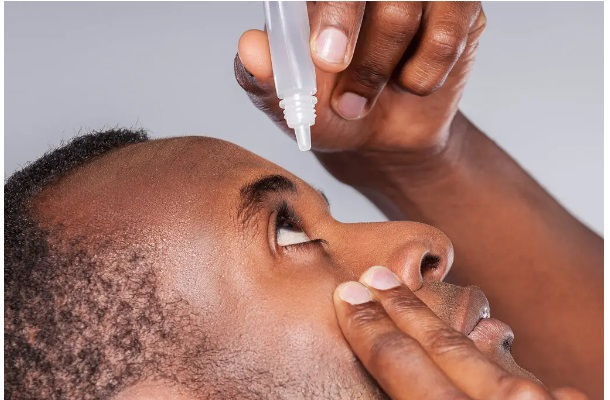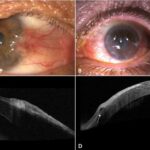
Ocular Pharmacology deals with the drugs used in the management of ophthalmic disorders, methods of ocular drug delivery, and the interactions of drugs and the eye. Although it is generally thought that the medical management of ocular disease is mainly administered through topical therapeutic agents, many systemic drugs and agents are also used.
These include diuretics for the control of intraocular pressure, immunosuppressants for the control of intraocular inflammatory conditions and antimicrobials for the control of infection. These indicate that ocular pharmacology extend beyond topical drugs. Therefore, basic pharmacological principles (pharmacokinetics and pharmacodynamics) are important to the optometrist or Ophthalmologist. Various pharmacokinetic and pharmacodynamic considerations and a proper understanding of ocular anatomy are needed. It is important to properly select a drug formulation, and account for drug absorption through various structures in the eye, local and
systemic drug metabolism, and possible systemic spread following ocular administration.
Drug delivery to the eye includes:
- Topical i.e. drop, ointment, gel, soft CL
- Periocular i.e. subconjunctival, subtenon, peribulbar, retrobulbar
- Intraocular i.e. intracameral, intravitreal
- Systemic i.e. oral, intravenous, intramuscular
A drug is administered to elicit a response in the body, either to prevent or manage a disease or to prevent or manage symptoms of a disease. A drug administered topically or systemically is absorbed through contact barriers into the tissues, or bloodstream and distributed to tissues, body fluids and organs (sites of action) throughout the body. Some of the drugs in the bloodstream is transferred to the liver where it is metabolized (metabolite) to a more water-soluble form that can eventually be eliminated from the body, and simultaneously making the compound metabolically and pharmacologically active (a prodrug) or inactive – Pharmacokinetics. The drug binds to appropriate molecules (cellular membrane receptors) which are usually specific for the drug acting as an agonist or antagonist to the receptor or by non-specific mechanisms and may act as an activator or inhibitor to an enzyme or a blocker to an ion channel. Sometimes the drug action is dependent solely on physical properties such as lipid solubility. This leads to the desired (sometimes undesired) effect of the drug on the body – Pharmacodynamics. A drug’s mechanism of action also determines how and where it works in the body.
Common Drugs Used in Ophthalmic Practice:
Antimicrobial
- Antibacterials (Antibiotics)
- Antivirals
- Antifungals
- Antiprotozoal
Anti-Allergy
- Antihistamine
- Mast Cell Stabilizers
- Decongestants
Anti-inflammatory
- Steroids
- NSAIDs
- Alpha Agonists
- Beta Blockers
- Carbonic Anhydrase Inhibitors
- Miotics
- Prostaglandin and Prostamide Analogs
Ocular Lubricants
Ocular Diagnostics
- Mydriatics and cycloplegics
- Local Anaesthetics
- Fluorescein dyes
Prescription Writing
You should typically use the generic, non-proprietary name of the drug instead of the brand name. Use the brand name of the drug only for prescriptions fulfilled in your hospital or when you specifically wish to prescribe the brand name for those fulfilled outside of the hospital. In this case, you should include a note on the prescription reading “No Generics.” There must not be more than five medications on a prescription form (polypharmacy) and must be numbered
accordingly. The handwriting must be legible and avoid abbreviations where possible.
A prescription must have at least five or six parts:
- The dosage form (formulation) of the drug e.g. Gutt, Oc, Tab, Cap, Susp, Syr, Cr, Inj
- The name (preferably generic) of the drug e.g. Timolol, Acetazolamide, Olopatadine, Co-Amoxiclav, Cefuroxime
- The strength of the drug or dose e.g. 0.5%, 250mg, 10ml, 312.5mg/5ml
- The dosage regimen (frequency) e.g. mane, od, bid, tid, qid, q3h, nocte
- The route of administration e.g. RE, LE, BE, PO, IV
- The duration e.g. 5/7, 10/7, 3/52, 2/12
E.g.
- Tab Azithromycin 500mg bid po x 3/7,
- Gutt Timolol 0.5% bid BE x 3/12,
- Syr Cetirizine 5ml nocte po x 10/7
Some Abbreviation Meanings:
- Gutt- drops
- Inj- Injection
- Oc- Ointment
- RE- Right Eye
- Tab- Tablets
- LE- Left Eye
- Cap- Capsules
- BE- Both Eye
- Susp- Suspension
- PO- Per os (taken orally)
- IV- Intravenous
- Syr- Syrup
- Mane- morning
- bid- 2 times
- tid- 3 times
- Qid- 4 times
- q3h- every 3 hours
- Nocte- Night
Introduction to ocular pharmacology.




